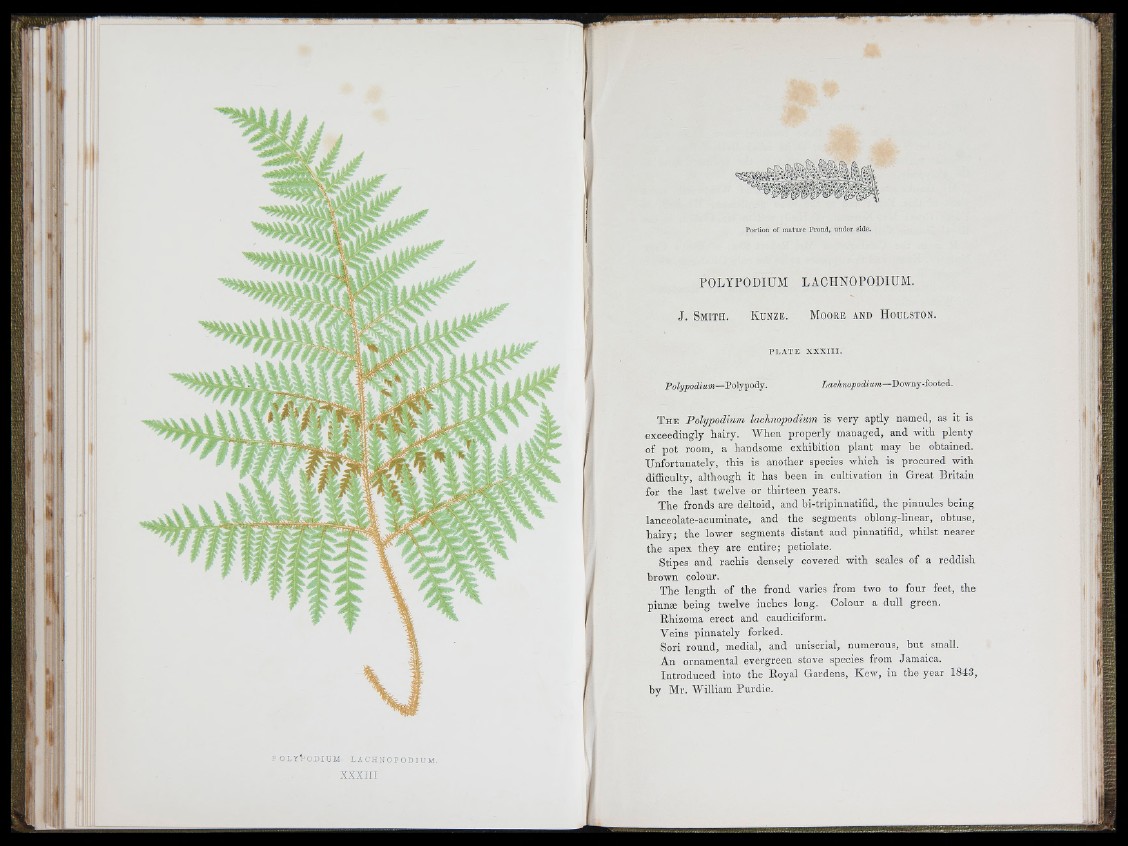
P o r t i o n o f m a tu r e F r o n d , u n d e r s id e .
POLYPODIUM LACHNOPODIUM.
J. S m i t h . K ü n z e . M o o r e a n d H o d l s t o n .
P I , A T E x x x i i i .
;—Polypody. Tjachnopodium—S)o'Nny-ÍootQá..
T h e Polypodium lachnopodium is very aptly named, as it is
exceedingly hairy. AVhen properly managed, and with plenty
of pot room, a handsome exhibition plant may be obtained.
Unfortunately, this is another species which is procured with
difficulty, although it has been in cultivation in Great Britain
for the last twelve or thirte en years.
The fronds are deltoid, and bi-tripinnatifid, the pinnules being
lanceolate-acuminate, and the segments ohlong-linear, obtuse,
h a iry ; the lower segments distant and pinnatifid, whilst nearer
the apex they are en tire ; petiolate.
Stipes and rachis densely covered with scales of a reddish
brown colour.
T h e length of the frond varies from two to four feet, the
pinnæ being twelve inches long. Colour a dull green.
Rhizoma erect and caudiciform.
Veins pinnately forked.
Sori round, medial, and uniserial, numerous, b u t small.
An ornamental evergreen stove species from Jamaica.
In tro d u c ed into the Royal Gardens, Kew, in the year 1843,
by Mr. William Purdie .
p o l y V o d i u m l a c h n o p o d i u m .
XXXI I I